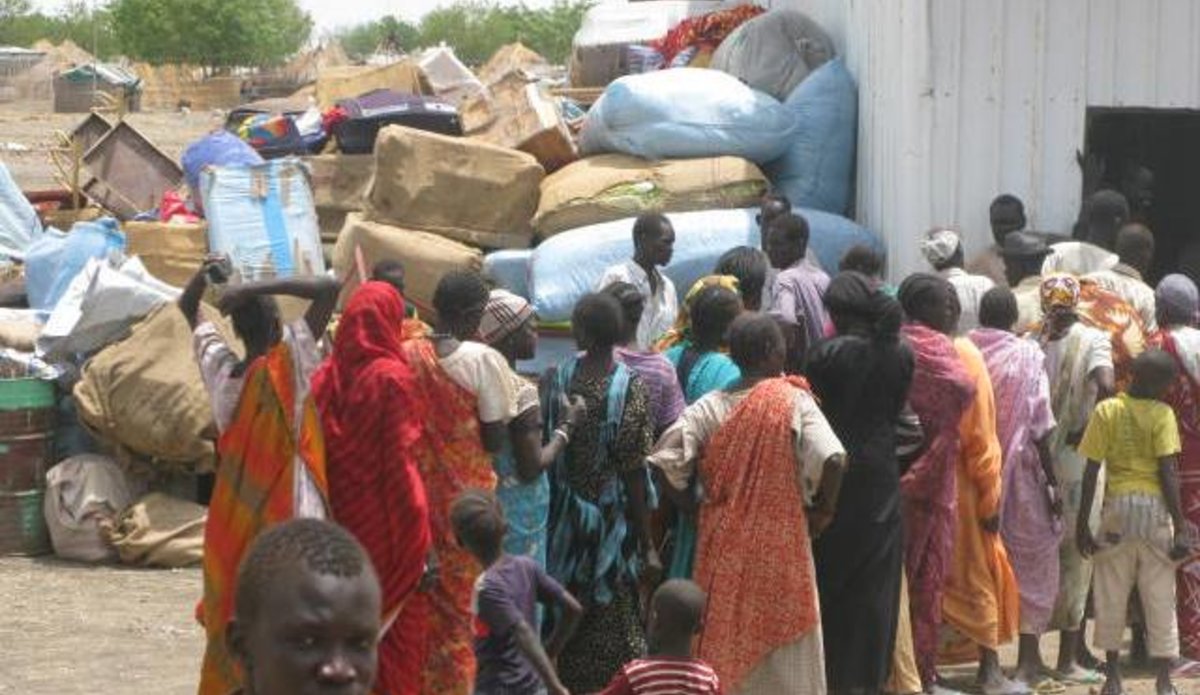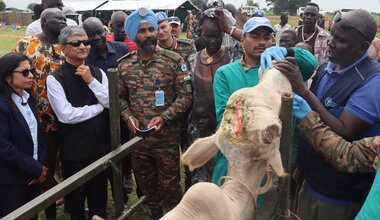Thousands from Blue Nile seek refuge in South Sudan
23 May 2012 - Thousands of Sudanese fleeing fighting between the Sudanese Armed Forces (SAF) and Sudan People's Liberation Movement-North (SPLM-N) in Blue Nile State have sought refuge in South Sudan's Upper Nile State, the UN Refugee Agency(UNHCR)said today.
According to the UNHCR, the number of Sudanese refugees who have recently crossed the border into South Sudan has increased from 1,500 to 10,000, bringing their total to over 80,000.
"Yesterday we moved the first 400 refugees away from the border," said Frederic Cussigh, head of UNHCR operations in the area, speaking from Bunj, Upper Nile. "Today another convoy has left with 400 refugees."
All refugees are receiving medical attention and food parcels, he added.
The refugees are destined for Yusuf Batil refugee camp, where some 300 tents have been pitched to accommodate new arrivals, with more expected to be erected in coming days.
Yusuf Batil is the third refugee settlement in Upper Nile, after Doro and Jamam.
Nonetheless, with the onset of rain, transportation of refugees by road is proving difficult due to poor road conditions. Once at the camps, lack of potable water becomes their new dilemma.
"The situation in Upper Nile is striking," said UNHCR Regional Water & Sanitation Coordinator Andrea Cippa. "The combination of black cotton soil and lack of adequate drilling equipment and consumables have thus far hampered extensive efforts to alleviate water shortages in refugee settlements."
Every effort has been made to improve access to safe drinking water, with 35,000 litres of water being trucked into Yusuf Batil on daily.
Separately, the number of refugees arriving in Yida, in South Sudan's Unity State, from the Nuba Mountains in Sudan crossed the 35,000 mark on 20 May.
The general condition of new arrivals, who mostly travel on foot, is very poor. Many are hungry and there are increasing signs of malnourishment.
Conditions in Yida are both difficult and dangerous, given its proximity to the Sudan - South Sudan border, previous bombardment, militarization of the area, and the lack of a large host community or infrastructure.
"Yida remains highly problematic as a safe location for refugees ...," said Peter Trotter, UNHCR Senior Protection Officer.
Efforts to encourage refugees to move to areas of greater safety and better infrastructure identified and equipped by UNHCR and the South Sudanese government have been fruitless. Many of the refugees prefer to remain in Yida – hesitant to be too far from home, and hopeful to return there quickly.
Despite UNHCR's continued belief that refugees will be safer farther south and away from the border and conflict area, we have significantly enhanced our protection and assistance presence to build upon the remarkable capacity of the people," Mr. Totter said.
South Sudan is currently hosting close to 150,000 refugees from the Central African Republic, Democratic Republic of Congo, Ethiopia and Sudan.
 UN
UN United Nations Peacekeeping
United Nations Peacekeeping





